Resources
Projects
Volkswagen Settlement Resources for States
Through the United States v. Volkswagen Group of America et al., Volkswagen AG has agreed to spend $14.7 billion to settle allegations of cheating emissions standards. Of that amount, $2 billion will be spent on national zero emission vehicle investments, and $2.7 billion will be used to establish an Environmental Mitigation Trust, which states and territories may use to invest in transportation projects that will reduce NOx emissions. NASEO has developed a series of resources to support State Energy Offices as they engage with other state offices and develop plans under the Settlement.
Initiative for Resiliency in Energy through Vehicles (iREV)
iREV brings together a unique cross-section of practitioners in emergency management, energy assurance, homeland security, and transportation to support the incorporation of alternative fuel vehicles in emergency response and preparedness operations. Led by an expert steering committee, iREV supports state and local emergency management decision makers by providing customized tools, information, and strategies about alternative fuel vehicle technologies, infrastructure, and potential uses in emergency scenarios.
Unlocking Private Sector Financing for Alternative Fuel Vehicles and Fueling Infrastructure
NASEO and its partners, the Center for Climate and Energy Solutions, NYSERDA, and Transportation Energy Partners, publicly kicked off their project, Unlocking Private Sector Financing for Alternative Fuel Vehicles and Infrastructure¸ at the 2013 Energy Independence Summit is Washington, DC.
Publications
 Volkswagen Settlement Beneficiary Mitigation Plan Toolkit
Volkswagen Settlement Beneficiary Mitigation Plan Toolkit
Author(s): Cassie Powers, NASEO, and Ingrid Malmgren, VEIC
NASEO’s Volkswagen Settlement Beneficiary Mitigation Plan Toolkit is a resource for State Energy Offices, State Environmental Agencies, and others to use as they develop their plans. The report provides an overview of the portions of the settlement that are relevant to states; highlights plan considerations for beneficiaries, various repower and replacement options, and tools that states can use to calculate NOx and other emissions reductions; and summarizes each eligible mitigation action, provides estimates of expected NOx reductions, and showcases successful implementation of technologies.

Baseline Assessment: Alternative Fuel Vehicles in State and Municipal Emergency Operations Plans
NASEO’s “Baseline Assessment: Alternative Fuel Vehicles in State and Municipal Emergency Operations Plans” provides an overview of emergency operations plans, summarizes key findings from a scan of alternative fuel vehicle (AFV) inclusion in state and local plans, and identifies opportunities to include AFVs in future emergency plans.
 iREV Case Study: Biodiesel Fueled Vehicles and Emergency Response
iREV Case Study: Biodiesel Fueled Vehicles and Emergency Response
This case study examines the benefits and considerations of incorporating biodiesel vehicles into emergency fleets, and features lessons learned from both New York City and Florida Power & Light’s use of biodiesel during emergency situations.
 iREV Case Study: Electric Vehicles and Emergency Response
iREV Case Study: Electric Vehicles and Emergency Response
The iREV electric vehicle case study examines the benefits and considerations of incorporating EVs into emergency fleets, and highlights ways that PG&E has used electric utility trucks as an exportable power resource, and how EVs proved to be a valuable asset in the aftermath of the Great East Japan Earthquake.
 iREV Case Study: Natural Gas Vehicles and Emergency Response
iREV Case Study: Natural Gas Vehicles and Emergency Response
This case study highlights the benefits and considerations associated with incorporating natural gas vehicles into emergency fleets, and examines how the Port Authority of New York and New Jersey, Atlantic City, New Jersey, and Trussville, Alabama have used alternative fuels during disasters.
 iREV Case Study: Propane Vehicles and Emergency Response
iREV Case Study: Propane Vehicles and Emergency Response
The iREV propane vehicle case study explores the benefits and considerations of incorporating propane vehicles into emergency fleets, and features lessons learned from the police force in Sandy Springs, Georgia, as well as Boston Public Schools.

Integrating Alternative Fuel Vehicles in Energy Assurance Planning: Information, Examples, and Data Resources to Guide States
Author(s): Sandy Fazeli and Jeff Pillon, NASEO
This report discusses the opportunities and potential challenges surrounding the deployment of AFVs in emergency fleets and the data and information needs for a more robust inclusion of alternative fuel vehicles in energy assurance plans. It includes a scan of states’ energy assurance plans to identify how alternative fuels and vehicle efficiency support resilience and mitigate energy supply disruptions.
 Transportation Technical Reference Manual and State TRM Updates
Transportation Technical Reference Manual and State TRM Updates
Guide to Characterize the Savings, Benefits, and Costs of Transportation Efficiency Measures
Author(s): NASEO and VEIC
While using standardized methodologies to measure the energy impacts and cost-effectiveness of efficiency programs is common practice in the electric and thermal energy sectors, this is not the case for transportation. As electric vehicles (EVs) spread nationwide, the electricity and transportation sectors have an increasing number of shared interests and an opportunity to learn from one another. One opportunity for knowledge transfer involves assessing the financial and environmental benefits of transportation measures, such as alternative fuel vehicles and fueling infrastructure, in the same way that energy utilities characterize efficiency measures and inform program development—namely, through a tool called the Technical Reference Manual (TRM). Inspired by this widely-used model, NASEO and VEIC developed the Transportation TRM in June 2014 to characterize energy savings, environmental benefits, and financial costs of selected transportation efficiency measures and establish a framework for comprehensive and informed decision-making. To access the energy price forecast and generation data referenced in the TRM, please click here (xlsx). The three appendices of this report, updated in November 2015, include customized TRMs created for the state of Utah and Vermont utilities to showcase how the recommendations of TRM play out using state-specific or locally-specific energy usage and pricing data.
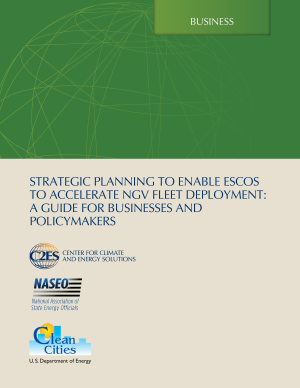 Strategic Planning to Enable ESCOs to Accelerate NGV Fleet Deployment: A Guide for Businesses and Policymakers
Strategic Planning to Enable ESCOs to Accelerate NGV Fleet Deployment: A Guide for Businesses and Policymakers
Author(s): Center for Climate and Energy Solutions
This guide addresses questions that private investors and state and local agencies may have about key considerations and strategies for deploying NGVs in public and private fleets. The guide analyzes a range of scenarios for tractor- trailer truck, school bus, and light-duty vehicle fleets. Each scenario estimates the potential for NGVs to achieve net cost savings compared to conventional vehicles. Although switching to natural gas can lower costs, many fleet managers have not converted their fleets to NGVs. The business model that energy service companies (ESCOs) apply to energy efficiency projects may help fleet managers transition to NGV projects and realize these potential cost savings.
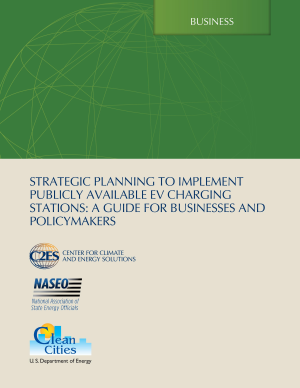 Strategic Planning to Implement Publicly Available EV Charging Stations: A Guide for Businesses and Policymakers
Strategic Planning to Implement Publicly Available EV Charging Stations: A Guide for Businesses and Policymakers
Author(s): Center for Climate and Energy Solutions
This guide answers questions that private investors and state and local agencies, such as state energy offices, may have in deciding whether and to what extent they should invest in publicly available charging infrastructure. It demonstrates that with continued public support in the near term, new business models could gradually make publicly available charging projects profitable for private businesses without additional government interventions.
 Applying the Energy Service Company Model to Advance Deployment of Fleet Natural Gas Vehicles and Fueling Infrastructure
Applying the Energy Service Company Model to Advance Deployment of Fleet Natural Gas Vehicles and Fueling Infrastructure
Author(s): Center for Climate and Energy Solutions
This paper explores the opportunity for using ESCO-style service contracts to advance investment in natural gas vehicles by fleets. Starting with a brief overview of the ESCO market, this paper explains how ESCOs reduce barriers faced by energy efficiency and cost savings projects, presents case studies that demonstrate how some of the features of ESCOs are being employed in cutting-edge NGV fleet projects, and explores how these features could be incorporated into innovative business models that reduce the barriers to NGV fleet project investment.
 The Role of Clean Energy Banks in Increasing Private Investment in Electric Vehicle Charging Infrastructure
The Role of Clean Energy Banks in Increasing Private Investment in Electric Vehicle Charging Infrastructure
Author(s): Center for Climate and Energy Solutions
This paper explores how Clean Energy Banks, or other similar organizations aimed at leveraging public funds to attract private investment in clean energy deployment, could help reduce the barriers to EV charging infrastructure by (1) supporting the development of viable business models for charging services in the near term and (2) helping scale up private capital investments into EV infrastructure in the longer term.
Briefing Memo: Integration of Alternative Fuel Vehicles in State Energy Assurance Planning
Authors: Sandy Fazeli, Program Manager, and Jeff Pillon, Energy Security Director, NASEO
Summary: If properly aligned, state energy assurance planning and wider-scale alternative fuel vehicle (AFV) and infrastructure deployment can have a mutually beneficial relationship. As weather-related disasters have become more frequent and disruptive to state and regional energy supplies, the role of alternative fuels in responding to and mitigating the impacts of gasoline and diesel fuel shortages are growing in importance. Despite these opportunities, linkages between energy assurance planning and AFVs remain limited. This briefing memo includes an assessment of state energy assurance plans and discusses strategies to more fully integrate and define the role of AFVs in these plans, with a focus on the crucial role Clean Cities coordinators and local stakeholders play in the energy assurance planning process.
Fact Sheet on Alternative Fuel Vehicles in State Energy Assurance Planning
Author: Sandy Fazeli, Program Manager, NASEO
Summary: This fact sheet highlights important information about the links between alternative fuel vehicle (AFV) deployment and state energy assurance planning, including a status update on how current state energy assurance plans address AFVs.
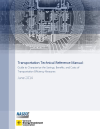 Transportation Technical Reference Manual and State TRM Updates
Transportation Technical Reference Manual and State TRM Updates
Guide to Characterize the Savings, Benefits, and Costs of Transportation Efficiency Measures
While using standardized methodologies to measure the energy impacts and cost-effectiveness of efficiency programs is common practice in the electric and thermal energy sectors, this is not the case for transportation. As electric vehicles (EVs) spread nationwide, the electricity and transportation sectors have an increasing number of shared interests and an opportunity to learn from one another. One opportunity for knowledge transfer involves assessing the financial and environmental benefits of transportation measures, such as alternative fuel vehicles and fueling infrastructure, in the same way that energy utilities characterize efficiency measures and inform program development—namely, through a tool called the Technical Reference Manual (TRM). Inspired by this widely-used model, NASEO and VEIC developed the Transportation TRM in June 2014 to characterize energy savings, environmental benefits, and financial costs of selected transportation efficiency measures and establish a framework for comprehensive and informed decision-making. To access the energy price forecast and generation data referenced in the TRM, please click here (xlsx). The three appendices of this report, updated in November 2015, include customized TRMs created for the state of Utah and Vermont utilities to showcase how the recommendations of TRM play out using state-specific or locally-specific energy usage and pricing data.
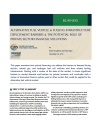
Alternative Fuel Vehicle and Fueling Infrastructure Deployment Barriers and the Potential Role of Private Sector Financial Solutions
NASEO, in partnership with C2ES, is pleased to release a new report, Alternative Fuel Vehicle and Fueling Infrastructure Deployment Barriers and the Potential Role of Private Sector Financial Solutions. This paper examines the ways in which private financing can address the barriers to demand facing electric, natural gas, and hydrogen fuel cell vehicles and their related fueling infrastructure. Starting with a review of the state of the market, it covers significant barriers to market demand and barriers for private investors and concludes with a review of innovative finance options used in other sectors that could be applied to the alternative fuel vehicle market. This report is part of a larger, NASEO-led project, Unlocking Private Sector Financing for Alternative Fuel Vehicles and Fueling Infrastructure. This two-year project, funded by the Department of Energy’s Clean Cities program, recognizes the critical role that State Energy Offices have and continue to play in the deployment of alternative fuel vehicles and their related infrastructure.
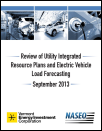 Review of Utility Integrated Resource Plans and Electric Vehicle Load Forecasting
Review of Utility Integrated Resource Plans and Electric Vehicle Load Forecasting
This paper was developed under NASEO’s project, Unlocking Private Sector Financing for Alternative Fuel Vehicles and Vehicle Infrastructure. It examines the treatment of electric vehicles (EVs) in integrated resource plans and long-term plans from 31 utilities that vary in size (fewer than 15,000 customers to greater than 5 million) and type (investor-owned, community-owned, and federally-owned). Plans from years 2008 through 2013 were reviewed and covered a planning horizon through 2031. In addition to detailed analysis of these plans, the paper provides a broad background on the current state of electric vehicle deployment along with a set of recommendations for policymakers and utilities to consider regarding the utility treatment of EVs.
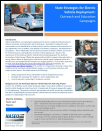
State Strategies for Electric Vehicle Deployment: Outreach and Education Campaigns
Based on the experiences of the Northeast Electric Vehicle Network planning project, the National Association of State Energy Officials has prepared this toolkit to support state and territory energy offices’ efforts in deploying EVs and electric vehicle supply equipment (EVSE, the infrastructure and equipment that comprise EV charging stations). Sourced from reports by the New York State Energy Research and Development Authority (NYSERDA), the Transportation and Climate Initiative (TCI), and the U.S. Department of Energy’s Clean Cities Coalitions in the Northeast and Mid-Atlantic regions, as well as phone interviews with subject matter experts, the toolkit explores the following:
- Unique perspectives of key stakeholders in the EV deployment process;
- Strategies for increasing “EV readiness” and EV deployment; and
- Lessons learned in conducting EV-readiness outreach.
Calls and Webinars
Webinar: Bulk Procurement of Electric Vehicles - Opportunities for States: January 9, 2019
Webinar: The Energy Savings of Truck Platooning: November 27, 2018
Conference Call: RFS and RINs: August 29, 2018
Webinar: Automated, Connected, Electric and Shared Mobility: October 30, 2017
Conference Call: EV/Utility Issues: August 31, 2017
Webinar: Alternative Fuel Vehicle Technology Update – Options Under the VW Settlement: June 1, 2017
Webinar: VW Settlement Emissions Tools: March 29, 2017
VW Settlement State Roundtable: February 10, 2017
VW State Planning Session: December 13, 2016
Conference Call: NASEO Transportation Committee: October 11, 2016
NASEO Transportation Committee Meeting: September 13, 2016, NASEO Annual Meeting, Providence, RI
Webinar: Volkswagen Settlement: July 21, 2016
Conference Call: NASEO Transportation Committee Meeting: July 14, 2016
NASEO Transportation Committee Meeting: February 10, 2016, NASEO Energy Outlook Conference, Washington, DC
Conference call: NASEO Transportation Committee Meeting: December 18, 2015
NASEO Transportation Committee Meeting: September 14, 2015, NASEO Annual Meeting, San Diego, CA
Conference Call
April 10, 2014, 3:30-4:30 pm ET
Conference Call
January 15, 2014, 3:30 – 4:30 pm ET
Conference Call
November 14, 2013, 3:30 – 4:30 pm ET
Conference Call
July 25, 2013, 3:00-4:00 pm ET
Conference Call
May 28, 2013
Integrating Alternative Fuel Vehicles in State Energy Assurance Planning
July 17, 2014
Using a Technical Reference Manual in the Transportation Sector
July 8, 2014
Strategic Deployment of Electric Vehicles (EV) and EV Infrastructure: A Cluster-based Analysis
February 21, 2013
Electric Vehicle (EV) - Ready Codes for the Built Environment
January 10, 2013
Financing Alternative Fuel and Electric Vehicle Infrastructure Webinar
June 12, 2012